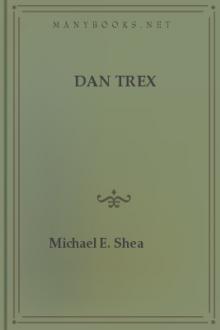How to Be a Mentsh (and Not a Shmuck), Wex, Michael [top inspirational books .txt] 📗

Book online «How to Be a Mentsh (and Not a Shmuck), Wex, Michael [top inspirational books .txt] 📗». Author Wex, Michael
III
A YIDDISH WORD, of course, taken from the Hebrew, seykhl comes up frequently in Yiddish conversation. It means “sense, wit, reason, understanding, brains.” These are good qualities anywhere, but in a culture in which study can be said to be a form of worship, they are a basic prerequisite for full participation. Seykhl occupies the place in Jewish culture that legs do in marathon running—and this is one reference to Jewish culture that doesn’t have to be qualified by the adjective “traditional”: intelligence continues to be the most highly admired and appreciated virtue in general Jewish society, even on the part of people who lack it themselves. Whether its heroes are Talmudic scholars and biblical commentators or university professors and other intellectuals (and note the popularity of lists of Jewish Nobel Prize winners—people whose intelligence has even been fêted by the goyim), Jewish culture puts such a premium on seykhl that scholars and rabbis really were the ideal of a people with no generals or kings.
The one thing that rabbis and famous scholars had in common with their admirers was the basic education discussed earlier. The scholars’ more sophisticated approaches to life, religious ritual, and sacred texts were gradually absorbed by their “public” in much the same way as rock ’n’ roll attitudes have penetrated offices and cubicles all over the United States: the behavior and way of thinking of a prestige group filters down to less exalted members of the community, often through written works in which elite customs and behavior are described in considerable detail. The general population then adopts such attitudes and habits as are accessible to them and commensurate with their surroundings. Once a tradition takes root, it replicates itself from one generation to the next because its adherents are all drawing from the same classic sources. Where Elvis was regarded as a tasteless joke by virtually every adult of my parents’ generation, his influence on every facet of American culture has been so great that his surname has become redundant. No one born and raised on this planet would even dream that I might be referring to film critic Elvis Mitchell, for instance, or that an Elvis imitator would be someone who types review copy while sporting dreadlocks to the middle of his back. And they’d be right not to do so.
Just as every rock musician owes something to Elvis, so does every rock fan, who has never even thought of picking up a guitar but likes to project the image of a certain type of rebellion. The practitioner and the nonpractitioner have both gone to the same school, as it were. That’s how it was with the Jews, but without the “as it were.” In an era when most people in Europe had no schooling at all and most of the nobility was semiliterate at best, future Jewish peasants and the future aristocrats of the European Jewish mind were sitting side by side in the same one-room schools, receiving the same basic education. According to the Yiddish proverb, “Ale yidn hobn eyn seykhl, all Jews have the same seykhl, all Jews think alike,” because they all share the same Talmudically based way of reasoning. The nature of the Yiddish language is such that even people with no education whatever—the school system mentioned here was overwhelmingly male, in the sense that “overwhelmingly” means 100 percent; girls’ education varied wildly, depending on time and place—even girls absorbed this way of thinking simply by learning how to speak: we’re back to the Latin idea of conversation as the way in which you lead your life.
Ways of thought and speech that have come directly from the schoolroom can be found in virtually every area of Yiddish. Answering a question with a question, for instance. Ask someone how they are in Yiddish, and the conversation is likely to go:
PERSON I:Vos makht ir [How are you]?
PERSON 2:Vos zol ikh makhn [How should I be]?
Aside from being a textbook example of what comics who speak a little French like to call a joke manqué, an answer of this type lets Person I know that nothing much has changed with Person 2 since the last time that they spoke to each other. It is a response that is rarely used with strangers, but tells anyone who knows Person 2 reasonably well not only that things are the same, but also that the unspoken second part of the sentence—“in view of the fact that I have to put up with” whatever it is that she has to put up with—need never be uttered. The interrogative tone says it all, and you’re supposed to know that. Dai le-meyvin, as they say in Yiddish; it means exactly the same thing as sapienti sat does in Latin: enough for a person with seykhl.
It is but a step from “How should I be?” to the type of rhetorical question immortalized, if that’s the word, in the famous old joke about Trotsky’s supposed confession to Stalin. A telegram arrives in Moscow. It reads: “I was wrong stop you were right stop I should apologize,” and is signed simply, “Trotsky.” The Great Helmsman, Comrade J. V. Stalin, is beside himself with joy: Trotsky has finally confessed his guilt. Stalin is so happy that he reads the telegram out loud. A Jew, whose identity varies from one version of the joke to the next, approaches directly and begs leave to correct the Little Father of the People. “No, Comrade. It





Comments (0)